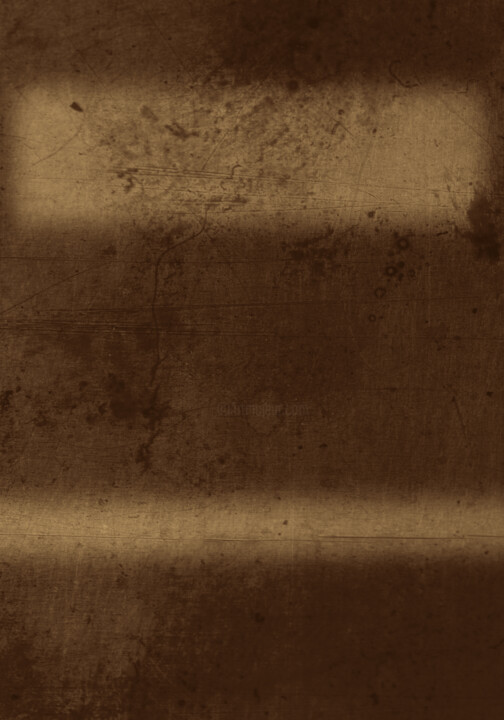



让我们知道您是否想看到这件艺术品的更多照片!
- 工作的背面 / 工作的一面
- 细节 / 签名 / 艺术品的表面或纹理
- 情境中的艺术品, 其他...
We have to talk about Rothko (2025) 数字艺术 由 Frank Verreyken
更多信息
- 包装 (管) 所有的作品都配有优质的承运方,经过严格的包装保护和已投保。
- 监控 跟踪订单,直到包裹交付给买方. 将提供跟踪号码,以便您可以实时跟踪包裹。
- 延迟 全球配送会在3-7天内送达 (估计)
- 不包括海关 价格不包括海关费用。大多数国家/地区对原创艺术品没有进口税,但您可能需要支付减免的增值税。海关费用(如果有)将由海关在抵达时计算,并由承运人单独计费。
更多信息
- 可追踪的在线真品证书 可以通过扫描插图的代码随时在线验证真品证书。
- 认证评级艺术家 专家研究一个艺术家的工作和职业生涯,然后建立一个独立的,可靠的平均价格值。平均价格价值座落在一个价格范围内的某一时期的艺术家。专家们也可能被要求建立一个更精确的估计为特定的工作。
更多信息
使用SSL证书进行100%安全付款 + 3D Secure.
更多信息
购买许可证以将此图像用于您的网站、通信或销售衍生产品。
Usage: 网络许可证
| 1050 px | ||

|
1500 px |
| 文件尺寸 (px) | 1050x1500 |
| 全球使用 | 是 |
| 用于多点支持 | 是 |
| 用于任何类型的媒体 | 是 |
| 转售权 | 没有 |
| 最大打印数量 | 0 (Zero) |
| 拟出售的产品 | 没有 |
购买后立即下载
此图片可以用许可证下载: 您可以随时下载它们。
限制
所有在ArtMajeur的图像是由艺术家创作的原创作品,所有权利是严格保留的。获得许可证后有权根据相应条款使用或利用图像。可以进行微小的修改,如重构或重新聚焦图像,使其完全符合新项目要求,但是,禁止进行任何可能损害原始作品的修改。其完整性(形状修改,扭曲,切割,改变颜色,添加元素等),除非事先从艺术家获得书面授权。
定制许可证
如果您的用途不在我们的标准许可证范围内,请联系我们获取定制许可证。
艺术图片银行-
限量版 (#1/10)
数字艺术,
数字油画
/
数字拼贴
在纸上
- 可用份数 10
- 外形尺寸 高度 45.5in, 宽度 33.7in
- 艺术品状况 艺术品完好无损
- 是否含画框 此作品未装裱
- 分类 电子艺术品 低于US$1,000 抽象主义 抽象主义
The Commercialization of Rothko: Between Contemplation and Consumption
Can we still view Rothko's work independently of its commercialization?
Mark Rothko dreamed of an art that would transform the viewer, offering spiritual experience in a world increasingly dominated by materialism. His monumental color fields were conceived as meditations, as spaces for inner contemplation. But nearly sixty years after his death, his work seems trapped in a paradox: how do you preserve the spiritual essence of art that is increasingly defined by its commercial value?
The Silence of Houston
In the Rothko Chapel in Houston, where fourteen monumental canvases envelop the visitor in an almost tangible silence, you still experience something of Rothko's original intention. Here, in contemplative solitude, the deep purples and blacks speak their own language. They demand time, patience, surrender. These are works that reveal their secrets only to those willing to slow down, to listen to what remains unspoken.
This experience – alone with the work, without crowds, without smartphone flashes – is becoming increasingly rare. In American museums, one can often still view Rothko's paintings in relative peace, but this privilege feels fragile, as though it could disappear at any moment under pressure from the art market and tourism.
The Circus of Paris
This rupture became painfully clear during the Rothko exhibition at the Fondation Louis Vuitton in 2024. Here, the artist was presented as a luxury brand, his work framed by Frank Gehry's architectural extravagance and LVMH's commercial power. The exhibition drew masses of visitors who consumed Rothko as a cultural product, an Instagram moment, a status symbol.
It was Rothko as circus: spectacular, accessible, but stripped of its essence. Where his work demands silence, it received spectacle. Where it yearns for contemplation, it got consumption. The irony was almost palpable: an artist who struggled throughout his life with the commercialization of art became posthumously the ultimate commercial product.
The Impossible Question
Can we still see Rothko independently of his commercial value? The answer is complex. The art market has transformed his work from spiritual objects into financial instruments. When a Rothko is worth hundreds of millions of dollars, it becomes nearly impossible to look at it purely. Every brushstroke carries the weight of speculation, every color transition is measured in market value.
Yet something untouchable remains in his finest works. Under the right circumstances – in the silence of a museum early in the morning, in the meditative space of the Chapel – his paintings can still exert their original power. They can still transform, move, compel contemplation.
The Paradox of Accessibility
Commercialization has paradoxically made Rothko both more accessible and less accessible. More people than ever know his name, his work hangs as posters in student rooms worldwide. But simultaneously, the commercial machinery has erected barriers between the public and the genuine experience of his art.
Rothko wanted his work to function as a drug – a means of consciousness transformation. Instead, it has often devolved into decoration, cultural capital, a marker of refined taste. The question is whether we, knowing what we know about the art market and its mechanisms, can still find the innocence to surrender ourselves to his work.
Conclusion: The Viewer's Responsibility
Perhaps the answer lies not with the art world, but with ourselves as viewers. In an age when everything becomes commercialized, experiencing art as it was intended becomes a conscious choice. It requires courage to slow down in a world that accelerates, to pause before what cannot be bought in works that seem to have everything for sale.
Rothko's legacy depends on our willingness to resist market logic, to see his paintings as more than investment or decoration. In every encounter with his work, we can choose: do we consume, or do we allow ourselves to be transformed? That choice, however small, determines whether Rothko's dream of spiritual art survives in our commercialized world.
相关主题
Frank Verreyken,数字艺术家和摄影师,16 岁时收到了他的第一台相机。从一开始,他的创作愿望就是捕捉绝对的美,无论这在当时意味着什么。然而,随着时间的推移,他开始在他的图像中寻求争议。三十岁时,他决定考入美术学院。
正是在那里,他明白了这种对争议的追求给他的作品带来了积极的维度,使他对所拍摄的一切的看法更加珍贵。尽管如此,他仍然觉得有必要拍摄其他主题,实现其他目标,表达不同的情感并创造原创图像。除了摄影之外,弗兰克还从事油画、丙烯画、水彩画、水粉画,探索不同的艺术表现形式。
当伦敦著名的“摄影师画廊”选择他参加以集中营为背景的以法西斯主义恐惧为主题的展览时,他的艺术生涯变得更加丰富。这段经历促使他寻求摆脱照片中他认为过于简单的美感。他在作品中采用了多层次的方法,寻求在作品中探索不同的维度。
Frank Verreyken 的艺术生涯是一段持续不断的旅程,是通过摄影和绘画不断追求新的表达形式、情感和情感的过程。









